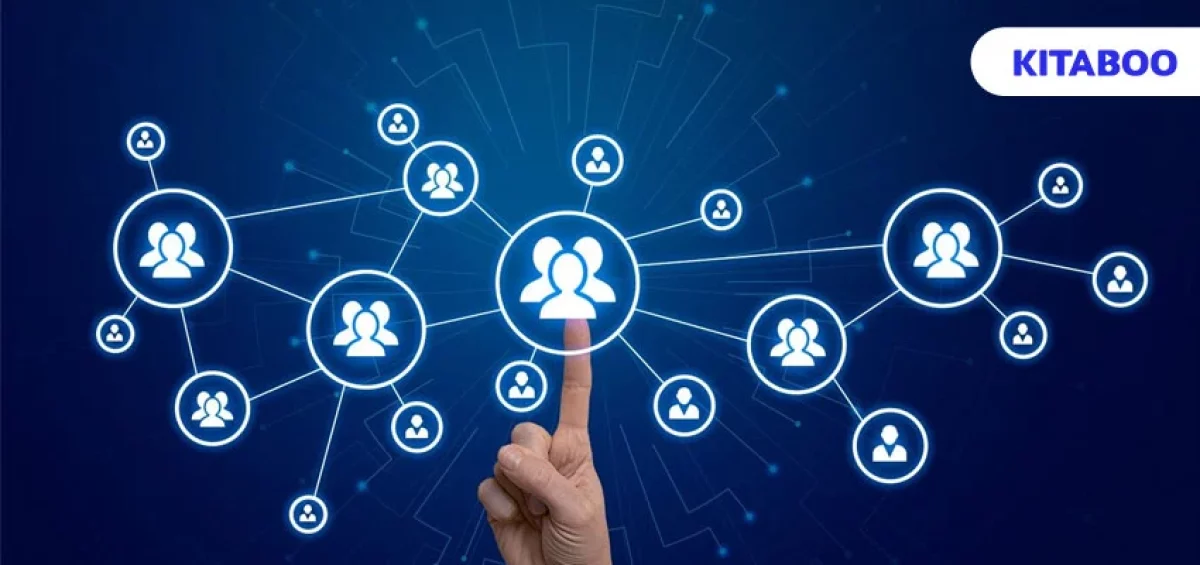Today’s K-12 education landscape consists of a rich tapestry of digital tools and platforms, each serving a distinct purpose in modern education. From Learning Management Systems (LMS) to assessment tools, content repositories, analytics engines, and beyond, this expansive toolbox offers immense potential.
Yet, the siloed nature of these technologies poses a significant hurdle. It fragments data, obstructing a comprehensive view of student progress and impeding educators’ ability to leverage insights effectively.
However, there’s a solution in the works. How can the integration of these tools be streamlined? How can K-12 educators harness the full potential of this diverse technological landscape?
The answer lies in a concept that is both revolutionary and transformative—interoperability for a connected ecosystem.
Table of Contents
I. What is Interoperability in Education Technology?
II. Benefits of Interoperability in the EdTech Industry
- Seamless Data Flow and Insights
- Personalized Learning Experiences
- Streamlined Administrative Tasks
- Enhanced Collaboration and Communication
- Cost and Time Efficiency
- Future-Proofing Technological Investments
III. Achieving Interoperability in Educational Institutions
- Assessment of Existing Systems
- Establishing Interoperability Standards
- Investing in Robust APIs and Middleware Solutions
- Collaboration with Technology Providers
- Staff Training and Awareness
- Data Security and Privacy Measures
- Pilot Programs and Continuous Evaluation
- Cultivating a Culture of Collaboration
- Future-Proofing Strategies
IV. The Future of Educational Technology: A Unified Ecosystem
What is Interoperability in Education Technology?
Interoperability in education technology refers to the seamless integration and communication between various digital tools and systems used in educational settings. It involves fostering a universal compatibility framework, allowing cross-platform compatibility between the LMS, assessment tools, content repositories, and analytics engines—to interact cohesively.
Interoperability enables educators to access a comprehensive view of student data, facilitating personalized learning experiences and informed decision-making. Embracing interoperability standards and solutions is key to breaking down data silos, fostering a more unified educational ecosystem, and maximizing the potential of technology in education.
Digital textbook platforms like KITABOO showcase the advantages of interoperability. By effortlessly integrating with diverse systems, KITABOO empowers K-12 educators to curate rich content, utilize robust analytics, and personalize learning experiences. Its interoperable nature streamlines content delivery and fosters a cohesive learning environment to enhance educational outcomes.
Benefits of Interoperability in the EdTech Industry
Interoperability isn’t only about making systems cooperate; it’s the foundation for forming a seamless digital environment. This connectedness is vital for efficient educational technology.
Let’s explore how this unity, achieved through interoperability, brings a host of transformative benefits to EdTech:
Seamless Data Flow and Insights
Interoperability ensures a smooth exchange of data between different educational systems, allowing educators to access comprehensive insights into student performance. This enhances their ability to use data effectively for personalized learning.
Personalized Learning Experiences
By breaking down data silos, interoperability enables tailored learning experiences. K-12 teachers can leverage diverse tools cohesively, catering to individual student needs. Studies have demonstrated that personalization enhances the enjoyment of the learning experience and improves learning outcomes.
Streamlined Administrative Tasks
Interoperability significantly streamlines administrative duties by seamlessly integrating various systems, such as student information systems, LMS platforms, and assessment tools. This integration notably reduces the burden on teachers for tasks like data entry and management, contributing to more efficient workflows.
Enhanced Collaboration and Communication
When various tools communicate seamlessly, collaboration among educators and students becomes more effective. Interoperability not only fosters better communication but also encourages the sharing of resources, amplifying engagement and collaboration. With a seamless flow of information, educators spend less time on logistical challenges and more time on direct instruction.
Cost and Time Efficiency
Interoperability reduces redundant data entry and manual processes, saving time and resources. The state of Michigan in the United States conducted an extensive study and discovered that implementing interoperability in school systems could potentially save the state a staggering $163,000,000 annually.
Future-Proofing Technological Investments
Adopting interoperable solutions ensures compatibility with future technologies and upgrades. Institutions investing in interoperability prepare themselves for technological advancements without major disruptions or overhauls
Achieving Interoperability in Educational Institutions
Interoperability in K-12 educational institutions isn’t just a concept; it’s a journey toward creating a unified digital ecosystem. Here’s a breakdown of steps to achieve interoperability for a connected ecosystem:
Assessment of Existing Systems
Begin by conducting a comprehensive assessment of current systems and technologies in use. Identify the various tools, their functionalities, data formats, and communication protocols. Understanding the existing landscape is crucial for devising an interoperability strategy.
Establish Interoperability Standards
One of the cornerstones of achieving interoperability lies in the adoption of standards. Initiatives like IMS Global Learning Consortium’s Learning Tools Interoperability (LTI) and the Experience API (xAPI) provide frameworks that facilitate seamless communication between different educational technologies. Embracing such standards fosters compatibility and streamlines integration efforts.
Invest in Robust APIs and Middleware Solutions
Implementing robust Application Programming Interfaces (APIs) is fundamental to facilitating seamless data exchange among diverse systems. APIs serve as bridges, enabling different educational tools and platforms to communicate effectively.
Additionally, middleware solutions play a pivotal role as connectors in the interoperability landscape. Acting as translators, these solutions standardize data formats, ensuring compatibility and coherence across various platforms.
KITABOO showcases versatile capabilities through its adaptable API architecture. It seamlessly integrates with existing LMS, enhancing interactive content delivery, simplifying administrative tasks, and maximizing analytical features for educational institutions.
Collaboration with Technology Providers
Forge strategic partnerships with technology providers. Digital textbook platforms like KITABOO stand out as strong examples of interoperability in action. It revolutionizes the reading experience by integrating multimedia content and cutting-edge technologies like augmented reality, engaging learners effectively.
Further, KITABOO’s AI-powered assistant simplifies assessment creation, enabling K-12 educators to generate various assessment components effortlessly. Its robust reporting and analytics tools offer insightful data on courseware consumption, allowing personalized content adjustments based on reader progress and interests.
Staff Training and Awareness
Educational institutions must invest in staff training to ensure that educators and administrative personnel understand the importance of interoperability. Training programs should focus on utilizing interoperable tools effectively to maximize their benefits.
Data Security and Privacy Measures
Ensuring robust data security and privacy measures is paramount when implementing interoperable solutions. Prioritize safeguarding sensitive student information by adhering to stringent compliance regulations such as GDPR (General Data Protection Regulation) or COPPA (Children’s Online Privacy Protection Act). This compliance guarantees the protection of student data during its exchange between different systems.
Pilot Programs and Continuous Evaluation
Initiate pilot programs to test interoperable solutions before full-scale implementation. Evaluate their effectiveness in improving collaboration, data exchange, and overall operational efficiency. Regularly assess and refine interoperability strategies based on feedback and evolving technology landscapes.
Culture of Collaboration and Openness
Foster a culture of collaboration and openness among educators, administrators, and technology teams. Encourage sharing best practices, experiences, and challenges faced during interoperability implementation, promoting continuous learning and improvement.
Future-Proofing Strategies
Lastly, continuously monitor technological advancements and updates in interoperability standards. Stay adaptable and agile, adjusting strategies to incorporate emerging technologies and ensure long-term interoperability success.
The Future of Educational Technology: Unifying Through Interoperability
The future of educational technology resides in achieving a unified ecosystem propelled by interoperability. Challenges loom, from disparate systems to security concerns. Yet, surmounting these obstacles demands commitment to standards, adaptable infrastructures, and collaborative efforts among tech providers.
Looking ahead, a unified ecosystem promises transformative K-12 educational experiences. Interoperability enables comprehensive data insights, personalized learning pathways, and streamlined administrative workflows. It lays the groundwork for future technological advancements, ensuring seamless integration of new tools and systems without disruption.
In this evolution, digital textbook platforms like KITABOO play a pivotal role. With its emphasis on interoperability, robust API architecture, and commitment to data security, KITABOO stands as a beacon for a connected educational landscape.
Embrace the future of education with KITABOO’s interoperable solutions. Experience a unified ecosystem that empowers educators and enhances student learning. Take the first step towards a connected educational journey today.
Discover How An Ebook Conversion, Publishing & Distribution Platform Can Help You
Kitaboo is a cloud-based content platform to create-publish & securely distribute interactive mobile-ready ebooks.
You May Also Like
-
Comparing Top 5 eReading Platforms for K12 Learning
Blog,Digital Publishing,eBook solution / December 4, 2023







